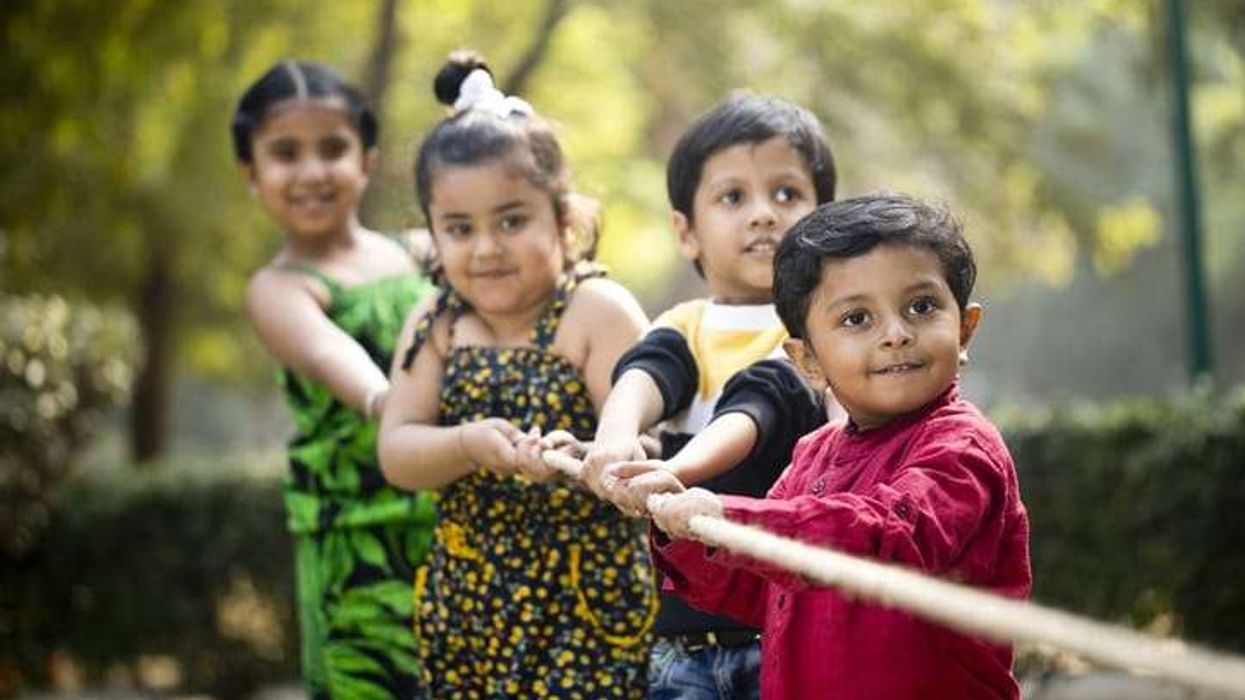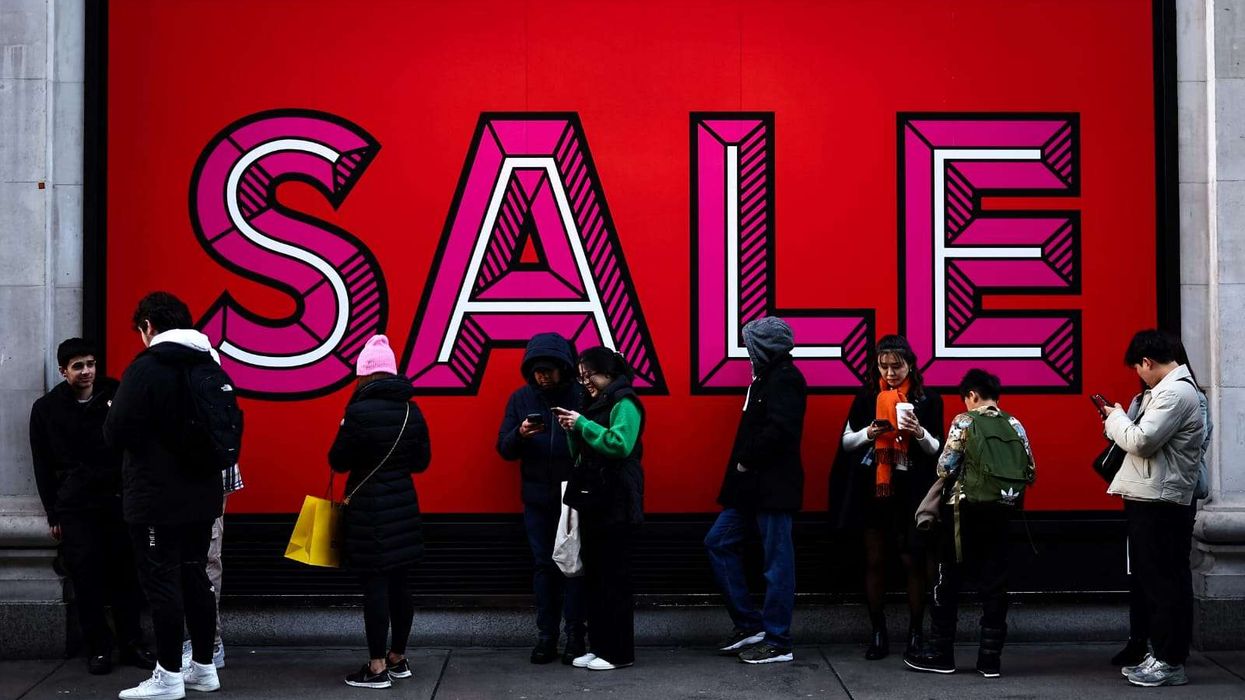by LAUREN CODLING
AT ONLY 29 years, fashion designer Kaushik Velendra has achieved more than most.
The first Indian-born graduate from the Master of Arts Fashion programme at the world-renowned art school Central Saint Martins (CSM) in London, Velendra made his London Fashion Week (LFW) debut last year when he showcased his critically acclaimed graduation collection.
He has launched his own luxury menswear label and has dressed an array of stars, including Bollywood actor Ranveer Singh and supermodel Alton Mason.
He has even won the approval of Anna Wintour, the notoriously hard-to-please editor of Vogue.
“We met at the LVMH Prize event in February and (Anna) spent time listening to me and interacting with my clothes. She compared me to (French designer) Thierry Mugler, which was amazing because he is the inspiration behind my clothing – she spotted that right away,” Velendra told Eastern Eye.
“She said ‘best of luck, I’ll be watching you and let’s see how you do’. I’m so eager to show what I can do and make this happen.”
Velendra’s first collection at LFW was widely praised by the fashion press and retail industry, with British Vogue fashion critic Anders Christian Madsen claiming it had “demonstrated a new acceptance of sexy, or perhaps of human nature.”
The collection, which heavily featured silhouettes and sportswear inspired details, was designed to “re-think the tailored man,” Velendra told Vogue at the time.
The show was also notable for its level of diversity – models from all ethnicities walked the runway, including men from Indian and Japanese backgrounds. Having a mix of models was integral to Velendra’s brand, he said.
“It is important to see a garment on every skin tone and every nationality. It is for the world,” he explained. “I wanted all kinds of diversity in my show, so that people can see the clothes on all kinds of models and the fact that they all look like stars, wherever they come from.”
Parts of the collection were tailored in Velendra’s native Chennai. He partnered with embroiderer Jean Francois Lesage, a close friend and fashion mentor, and his team of Indian artisans – they beaded his clothing using traditional Indian embroidery.
Showcasing the craftsmanship of his native country was a central aim behind Velendra’s work. He hoped to show “a whole other perspective of an Indian designer”, he explained. “Everyone thinks Indian designs will be full of colour, glamour and Bollywood and I’m trying to show a whole new dimension of amazing craftsmanship and quality.”
Velendra’s interest in fashion began as a teenager, while growing up in Chennai in south India. He began working on Bollywood film sets as a light boy and worked his way up as a costume designer. At the same time, he worked in retail – first dabbling in sales and then securing a position as a retail designer.
He set himself a 20-year-plan – but within four years, he had dressed everybody on his wish list and achieved all his goals. Velendra aspired to reach new heights – and in 2014, a new chapter began for him.
An invitation to attend Cannes Film Festival gave him the chance to showcase a line of menswear and meet a number of influential people in the industry who showed an interest in his work. They advised him to branch out and move outside of India.
Around the same time, Velendra struck up with a friendship with a neighbour. Unbeknownst to Velendra, the neighbour was Lesage, who was known as a well-respected French couture embroiderer. “I had no idea who he was back then, but as I grew, I studied him and realised I had someone amazing living right next to me,” the Bangalore-born designer laughed. “He has really mentored me and has watched me grow.”
Determined to further his career internationally, and on the advice of Lesage, Velendra applied for a place at CSM in London. The arts and design school has a reputation for guiding some of fashion’s greats, such as Marc Jacobs and Alexander McQueen.
Despite his ambition, Velendra failed to secure a place at the institution. Undeterred, the designer moved to London in 2014. “I wanted to know why it was so hard to get a seat at the number one fashion school in the world,” he recalled. “I wanted to work my way up so I came to London to study elsewhere so that would give me time to understand it.”
The creative began “knocking on doors”, speaking to senior lecturers and trying to make people understand how much he wanted to study at CSM. “I had become someone that wouldn’t give up,” he said.
Eventually, Velendra secured a place at the school and was thrilled to be living out his dream. However, he admitted his time at CSM was not always easy. The UK fashion industry was “so different” to the fashion world in India, and Velendra admitted CSM was a “shock in the beginning”.
“It took me a while to adapt to figure out the way people work and the way that they dress,” he said. “But it instantly exposed me to an international platform and it was a time when I could actually see things from a global perspective, rather than just from a single perspective.”
Despite the challenges, Velendra went on to become the first Indian-born graduate from the prestigious Master of Arts Fashion programme, which he completed with distinction in 2019. Crediting CSM for “developing him into someone who had a clear identity”, Velendra is keen to carry on with his label. He has ambitions to dress someone for the prestigious Met Gala in New York – which has been postponed due to the coronavirus pandemic – and wants to expand his brand across the world, citing interests in New York, UAE, Russia and India.
Throughout his time in the fashion world, he has learnt invaluable lessons on the industry. But he also has learnt an array of precious life lessons – including learning to “always be yourself,” no matter what others say.
“I’ve learnt that I have to always be genuine and honest and caring and hardworking,” he said. “That is the most important thing – from there, everything else will just fall into place.”











